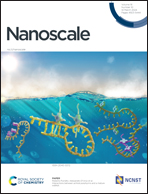Recent progress in critical electrode and electrolyte materials for flexible zinc-ion batteries
Abstract
With the increasing popularity of flexible and wearable electronic devices, the demand for power supplies that can be easily bent or worn is also rapidly growing. However, traditional lithium ion batteries are difficult to adapt to complex wearable devices because of their unsatisfactory flexibility and thickness as well as safety issues. Zinc-ion batteries have several advantages, including low redox potential, high theoretical capacity, high safety, and abundant reserves. These features make flexible zinc-ion batteries (FZIBs) an ideal wearable energy storage device candidate. The electrochemical performance and mechanical deformability of FZIBs were pivotally determined based on the properties of their electrode and electrolyte. Herein, we summarize some recent advances from 2015 to 2023 in the design and preparation of various electrode and electrolyte materials for FZIBs with controllable morphology and structure, excellent mechanical property, and enhanced electrochemical performance. Moreover, efforts to explore the potential practical applications of FZIBs have also been considered. Finally, we present and discuss current challenges and opportunities for the development of high-performance FZIBs.

- This article is part of the themed collection: Recent Review Articles


 Please wait while we load your content...
Please wait while we load your content...